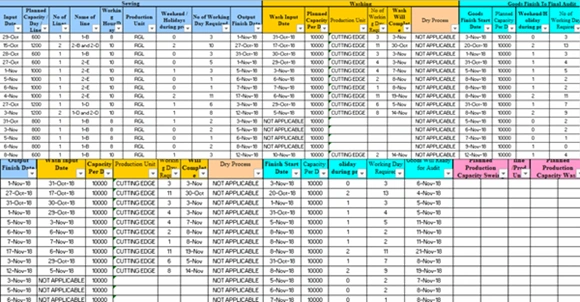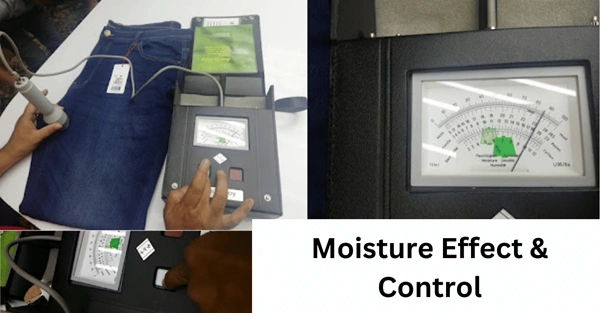Garments Production Planning Execution Process
Garments Production Planning Execution Process
Planning is the term widely used for its immense importance in day-to-day life. It comes with strategy, mission, scheduling & routing. Though it seems like planning & scheduling are the same stuff, but in real practice, it is not. Planning is a summary view of a set of activities in which proper objective, mission, routing path & scheduling are included. From planning, we can find alternative paths & solutions. Scheduling is a part of planning with proper time & action plans for selective activities. In this article, we Detail an explanation of How to Do Garments Production Planning and its Execution Process.
Planning, production, and shipment; if all 3 things happen under the same plan, that is the perfect execution. A production planner does the plan, the merchandising team sources the materials, production team does the production. The quality team controls the quality level so that the lot gets passed in the final inspection. Then the shipment happens, and the goal is achieved. A collective team affords the need for that. What are the things to do for that, and what are the step-by-step processes; get answers to these questions below:

Garments Production planning
Planning is an important factor in the garment industry. Garment manufacturers take orders based on production planning. Proper planning can execute the right time delivery (shipment) of export garments, that’s why planning is a department in the garments manufacturing industry and getting high value to middle and top management. Among the cutting, sewing, washing, and finishing departments; sewing capability is the main factor of garment production planning.
Getting a job in garment production planning is like a dream come true. A demandable job sitting at a cool desk, very much respected by all departments. A production planner’s salary is comparatively more than other departments; not needing to deal with too many people, report, and work with top management is what makes a production planner very special in the apparel manufacturing industry.
Objectives of Garments Production Planning
- Utilize full production capacity
- Right product input right line
- Meet the customer’s given delivery date.
- Execute the whole garments manufacturing process
- Give feedback to top management
Production Planning Process Execution Flow Chart:
Order Confirm
↓
Production planning
↓
Sample development and approval from buying house
↓
Order chart and QC file received
↓
Trims, Accessories and Fabric in-house
↓
Pre-production sampling
↓
Pre-production sample approval
↓
Bulk cutting
↓
Sewing
↓
Washing
↓
Finishing
↓
Final Quality inspection
↓
Goods release/ pass in inspection
↓
Shipment
Cutting Plan
Cutting is not all about capacity, efficiency, and working hours. Cutting starts as per the planning sequence if the garment production preparation process has already been completed. Cutting delay for some quality issues of fabrics. Based on shade grading, and shrinkage, there is a cutting plan.
Cutting Planning process:
Cutting Planning is done based on the following:
- Production Plan
- Order details e.g. Size breakdown, Specifications, etc.
- Approved Shade Band chart and approved fabric swatches.
- The Production Plan is received from the Production Manager, order details from the Merchandiser, and the Shade Band Chart from the QC Department.
ii. Based on the above information the Cutting In Charge prepares the Cutting Plan.
iii. The Cutting In-charge informs the Size, Ratio, and fabric width of the CAD department for marker preparation by preparing the cutting lay order sheet.
iv. Once the Cutting In Charge has approved the marker after it has been checked for the pattern direction tightness and consumption, it is further approved by the Production Manager for efficiency.
v. Cutting In-Charge requisition slip based on the consumption approved by the Production Manager and given to the store’s department for issuing of fabric.
Sewing Plan
A Sewing plan depends on per-hour production capacity, working hours, efficiency, order quantity, machine types, and product difficulties. The first day is to set the Line layout, 2nd day you will get output but production will be less than average. Sewing planning for example:
For a lot of 5000 pcs, Your sewing 1st-day production is 300, 2nd Day 700, 3rd Day 1000, 3rd Day 1150, 4th day 1150, 5th day, 6th day the rest 700, and layout of the next lot. So your average production per day is 833.
Washing process Plan
When it comes to the wash process, generally a minimum of 3 days keep after the sewing completion date for the washing plant. In the garments industry, everything never going to happen as per planning. Sewing may take two days more than the planned date. So pressure going to hit on Washing and Finishing. A production planner has to follow up washing backlog with Washing factories; what goods are urgent, and what washing delay is allowable. If the garment manufacturer does not have its own washing plant, they have to give a subcontract to another factory. In this case, communication with a washing plan, and washing follow-up are very much necessary for a production planner.
Finishing Plan
The finishing process is very complex of fancy style. Casual styles are comparatively easier than fancy styles. Based on the buyer’s product quality standard and the number of the finishing process, finishing the production plan can be done. If you have many lots in hand in finishing, you have to check which delivery is tight. Finishing is done on a priority base and Shipment date status.
Final Audit and shipment
Final quality inspection is done when goods packing is already completed. If a final inspection fails and the buyer asks to recheck the whole quantity of goods, you will fall into trouble if you do not have time in hand to ship the goods. So it’s really necessary to keep one week in advance when you do production planning.
Garments Production Planning and Execution Factors
These factors are related to starting and executing planning.
- Order Sheet
- QC File (Trim Card)
- Approved sample
- Size set cutting and approval status
- Supplier raw materials quality clearance
- Bulk cutting start date
- Daily sewing production
- Washing status
- Finishing Backlog
- Shipment date



